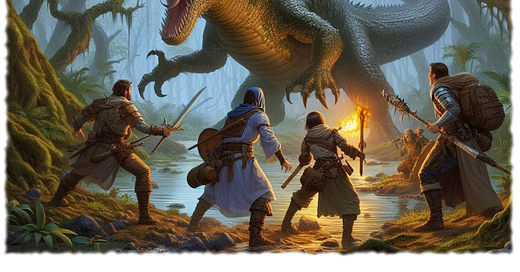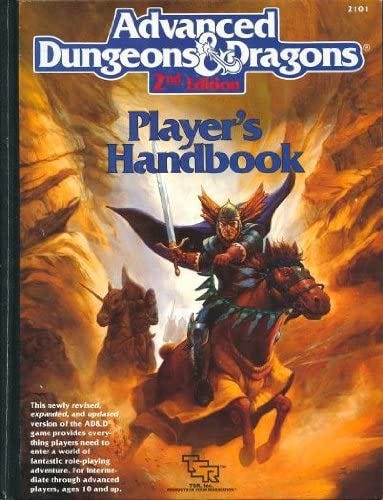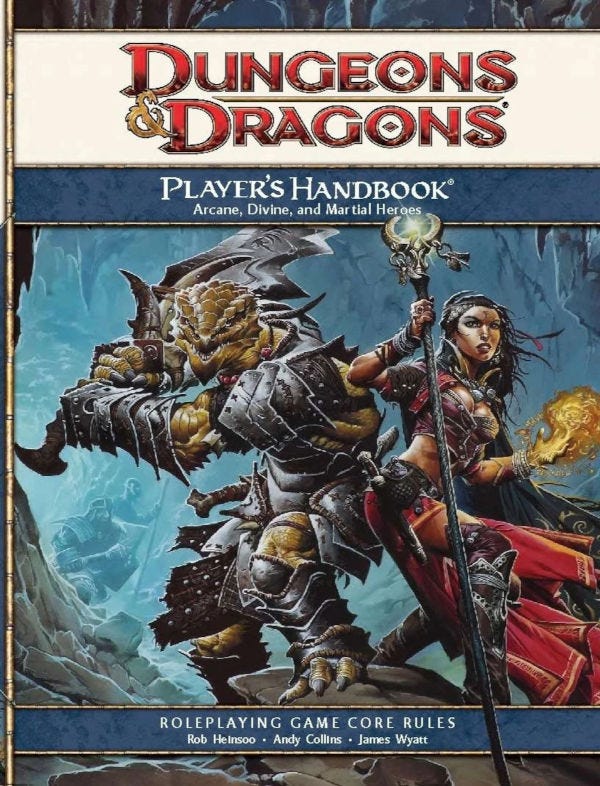Before I get into today’s topic, I have a request. This newsletter and my YouTube channel do not have a core type of content that I produce. I bounce around between a lot of different D&D topics. I would like to understand what stuff you enjoy the most. I can’t say that I won’t do the other stuff, but I would like to better understand the audience.
Choices are always hard. No matter how much you want something, you always have to weigh it against what you might be giving up. As a result, D&D has included multiclassing as a player option since the days of Advanced Dungeons & Dragons.
As with most D&D rules, the specifics on how exactly you multiclass have changed a lot over the years. I took a look back on the different approaches and have a few opinions.
After this message…
Support the Journal
All my new content is free for everyone. If you like this content, you can show your support for the journal by making a one-time contribution through PayPal or Ko-Fi.1
OR, consider becoming a paid subscriber. Be sure to read my About page for details.
The Early Years (AD&D and 2e)
Multiclassing has been around for almost as long as D&D. I could not find references to multiclassing in the OD&D, B/X, or BEMCI editions. The first rules I could find were in AD&D and basically match what was later published in 2e.
These early editions had different rules depending on whether you were playing a human or non-human character.
Multiclassing
Humans could not multiclass. And even when playing a non-human, you were limited in what combinations were available to you. For instance, as a dwarf, you could be either a Fighter/Thief or a Fighter/Cleric, but you could not be any other combination.
Once you decided which multiclassing combination you wanted, you basically got all the features the second class. You would average your hit die rolls when you leveled up and you only level up one class at a time. Your character was both classes.
Dual-Classing
This was the only option if you were a human character. It is similar to multiclassing, but there were some consequences you needed to take into consideration.
When it was time to level-up, the player could decide that, rather than leveling up in their current class, they would switch to a new class. They would get to keep the abilities of the current class and gain the 1st-level abilities for the new class as well. When leveling up again, they could either keep leveling up the new class or switch to yet another class.
The restriction is that you could only do this a maximum of four times and you could never return back to a class you had switched away from. Also, in those editions of the game, XP was awarded differently based on your class and what specific things you did during the encounter. If you performed any actions using abilities from anything other that your current class, then you could not receive XP for that encounter. That is a pretty serious penalty.
Full Player Flexibility (3.5e)
With the release of 3e in 2000 and 3.5e in 2003, the options for multiclassing expanded greatly. The rules no longer restricted your options based on your race. The player had the freedom to more-or-less do whatever they wanted.
You could decide to add levels in as many classes as you desired. Once you gained a level in a class, you got access to all the abilities for that level of the class. Your hit points and bonuses were calculated based on the total number of levels for all your classes.
You could be a 1st-level Fighter, 1st-level, Druid, 2nd-level Rogue, and 1st-level Sorcerer. Your character would have all the abilities of those class levels with the hit points of a 5th-level character. It is more complicated than that, but that is the gist.
But, with great power comes great responsibility.
While the rules do not explicitly say that you cannot do certain combinations, not all classes work the same. You need to adhere to all the rules for each class your character has.
Think of this situation. You are a 5th-level druid and you want to add a level of fighter to your character. You multiclass and then go pickup some chainmail at a local shop. You head out on your next adventure ready to take on new challenges.
Sounds great, except that druids cannot wear metal armor. All of your druid abilities are suppressed while wearing metal armor. So no wild shape for you.
The player has full flexibility to do what they want, but must also deal with the consequences of their choices.
Focus on the Essentials (4e)
4th edition took the complexity of the earlier editions and the flexibility of 3/3.5e and streamlined it down to a core set of rules that give you flexibility without it becoming a burden to manage.
To multiclass in 4e, you simply take a multiclass feat for the class you want to add. That is basically it. There are multiclass feats for each class. There is a prerequisite for each feat that ensures your score for the key ability of the new class is appropriate. The feat then grants you training in a skill and access to the core ability for that new class.
As with AD&D and 2e, you could only have one secondary class.
If you think about it, when you multiclass into a rogue, why are you doing it? Because you want Sneak Attack. When you multiclass into a warlock, you want Eldritch Blast. You don’t, necessarily, want all the other stuff that comes with those classes, you just want the core ability.
These feats give you access to the core ability of the new class without muddying the water with unnecessary complexities. You do not need to keep track of different hit dice or bonuses or varying XP. You just take the feat and you get the ability you were after in the first place.
The power swap feat that you can take later on allows you to swap an encounter power from your primary class with an encounter power from your secondary class. As you level up, you can repeat this swap again and again to get access to different powers.
Once you reach the paragon tier, there is an additional option where you can select powers from your secondary class to replace powers from your primary class.
Each of the Player’s Handbooks had multiclass feats for the classes in that book and the powers books had additional feats that further enhanced what you could do with your secondary class.
These rules get you what you want without the stuff you don’t need and still allows you the flexibility to customize your character as you level up. Rather than creating a whole new system, 4e simply uses the feat rules to manage everything.
AD&D and 2e had multiclassing rules that were similar to a lot of the rules from those editions. They had documented boundaries and limitations based on your choices. This is not bad, that was just how those games were designed and played.
3/3.5e swung the pendulum the other way and opened it up where the player had full flexibility to do whatever they wanted. Multiclass as many times as you want to as many classes as you want. But you need to deal with the consequences. Again, that approach stays true to the design of that edition.
4e found the balance. You are limited to a single secondary class, like in AD&D and 2e, but you are free to choose whatever secondary class you have the ability score to use. No extraneous rules. It just gives you more options to customize your character the way you want to.
You had to know that this was not going to be an objective review of multiclassing rules, right?
What do you think?
PayPal and Ko-Fi contributions are processed via Shenanigans Media LLC









